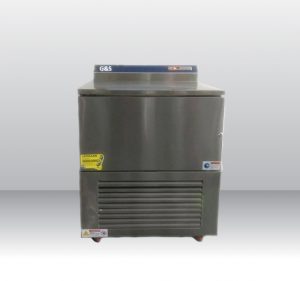Is There An Ideal Product Core Temperature for Blast Freezing?
Establishing a correct core temperature requires meticulous trials before finalizing the freezing process for a particular food type and operation.
Achieving the required core temperature is vital to ensure food safety and the planned shelf life. However, the real trick is not to overcool the product below the stipulated core temperature.  If the product is cooled more than what is necessary, there is a wastage of costly energy and the product becomes drier. Also, precious production time is lost as the blast freezer has a fixed capacity. Once this product is shifted to a storage freezer room, the core temperature of the product will reduce further by 5-10C depending upon the surface temperature of the food. However, eventually, the product will warm up to the ambient temperature in the cold room.
If the product is cooled more than what is necessary, there is a wastage of costly energy and the product becomes drier. Also, precious production time is lost as the blast freezer has a fixed capacity. Once this product is shifted to a storage freezer room, the core temperature of the product will reduce further by 5-10C depending upon the surface temperature of the food. However, eventually, the product will warm up to the ambient temperature in the cold room.
Blast freezing requires meticulously planned and executed trials upfront wherein the core temperatures of a few samples are carefully measured. This is done to determine the food’s core temperature which should be sufficient to cool the core to -18C in the storage room once the heat from the product core flows to the surface within an hour or so.
Is the Evaporator of a Blast Freezer Different From That of a Freezer Room ?
Evaporator units consist of evaporator coils & fans apart along with a defrosting system. Evaporator coils of blast freezers are larger than those of freezer rooms. They are big enough to cover the entire food storage area. Bigger coil face area allows for a higher refrigerant temperature which reduces the compressor capacity required as well as product dehydration.
The fin spacing in evaporator coils is double as compared to the coils of storage units especially on the inlet side so as not to get blocked with frost.
Fans with a higher air discharge capacity are used to reduce the freezing time. They also need to cover the entire coil face. They should also have adequate dynamic pressure head to ensure that air moves around the product at adequate speed to remove heat at required rate.
The defrosting, by electric heaters or hot gas, should ensure complete removal of frost as air movement should not get blocked in the succeeding cycle. Blockage by ice can also damage the coils.

